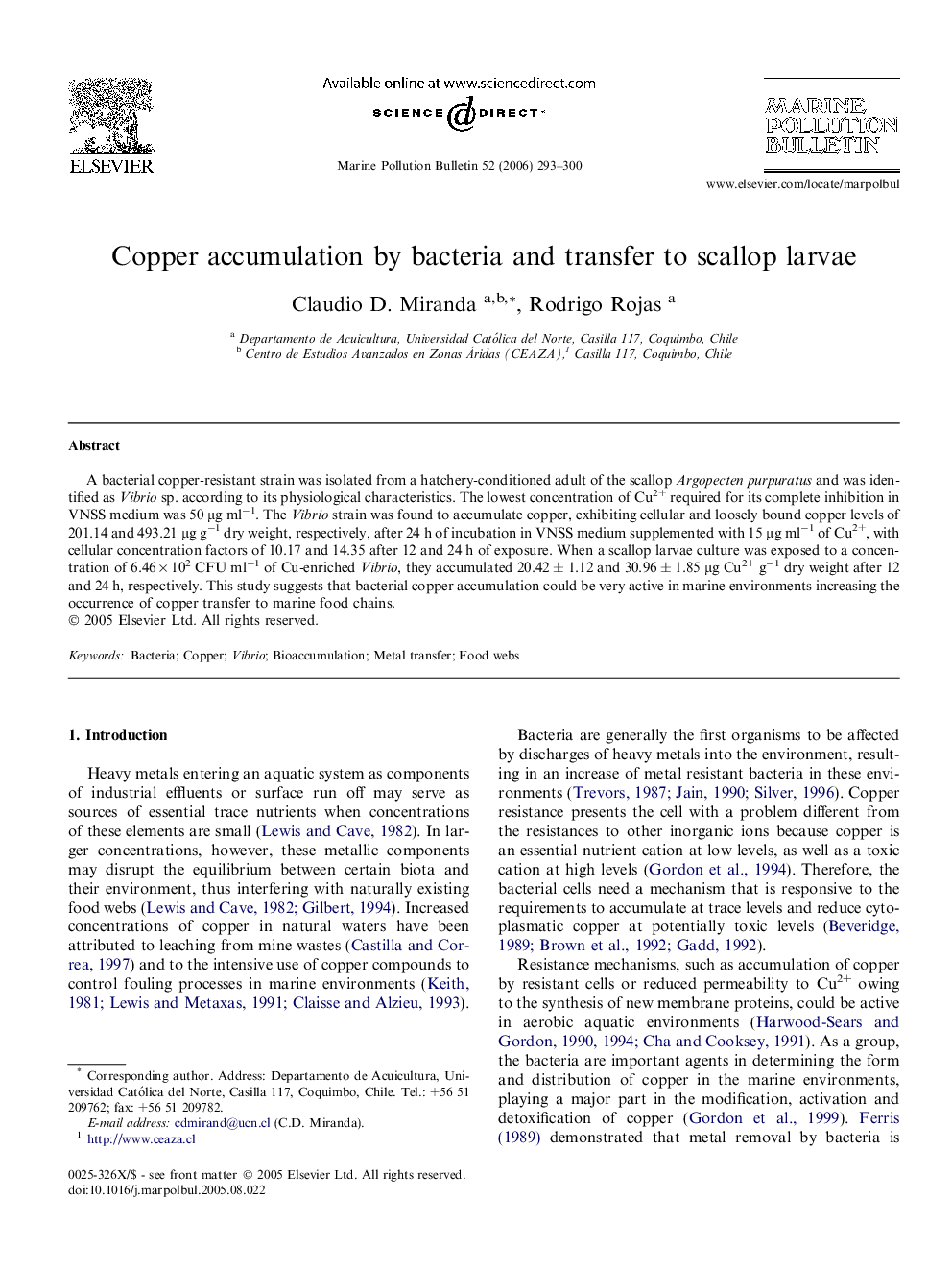| Article ID | Journal | Published Year | Pages | File Type |
|---|---|---|---|---|
| 4478143 | Marine Pollution Bulletin | 2006 | 8 Pages |
A bacterial copper-resistant strain was isolated from a hatchery-conditioned adult of the scallop Argopecten purpuratus and was identified as Vibrio sp. according to its physiological characteristics. The lowest concentration of Cu2+ required for its complete inhibition in VNSS medium was 50 μg ml−1. The Vibrio strain was found to accumulate copper, exhibiting cellular and loosely bound copper levels of 201.14 and 493.21 μg g−1 dry weight, respectively, after 24 h of incubation in VNSS medium supplemented with 15 μg ml−1 of Cu2+, with cellular concentration factors of 10.17 and 14.35 after 12 and 24 h of exposure. When a scallop larvae culture was exposed to a concentration of 6.46 × 102 CFU ml−1 of Cu-enriched Vibrio, they accumulated 20.42 ± 1.12 and 30.96 ± 1.85 μg Cu2+ g−1 dry weight after 12 and 24 h, respectively. This study suggests that bacterial copper accumulation could be very active in marine environments increasing the occurrence of copper transfer to marine food chains.
